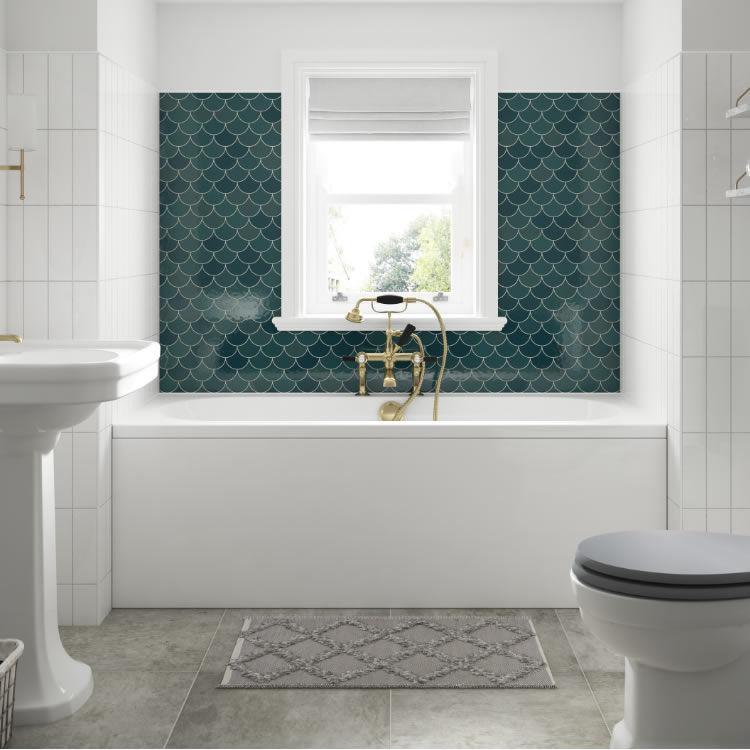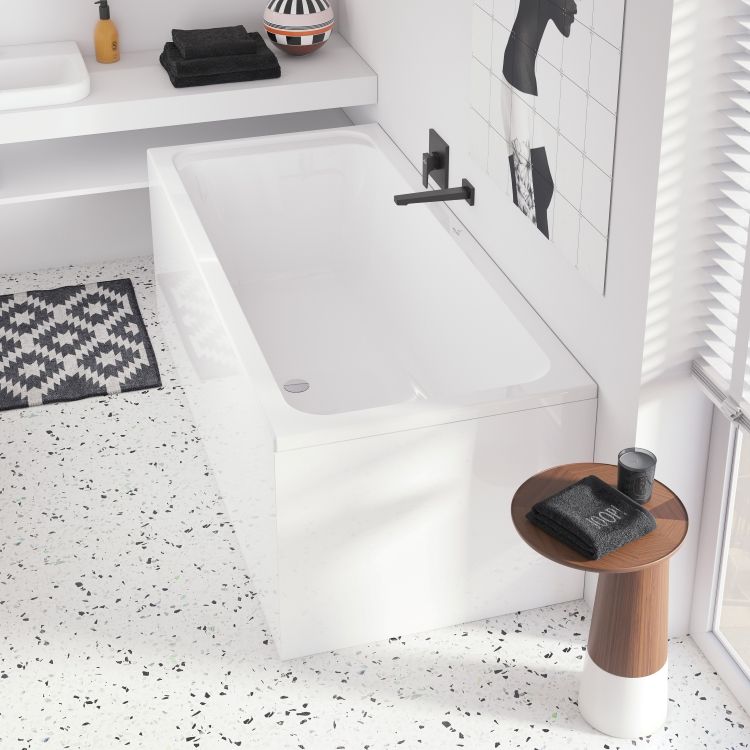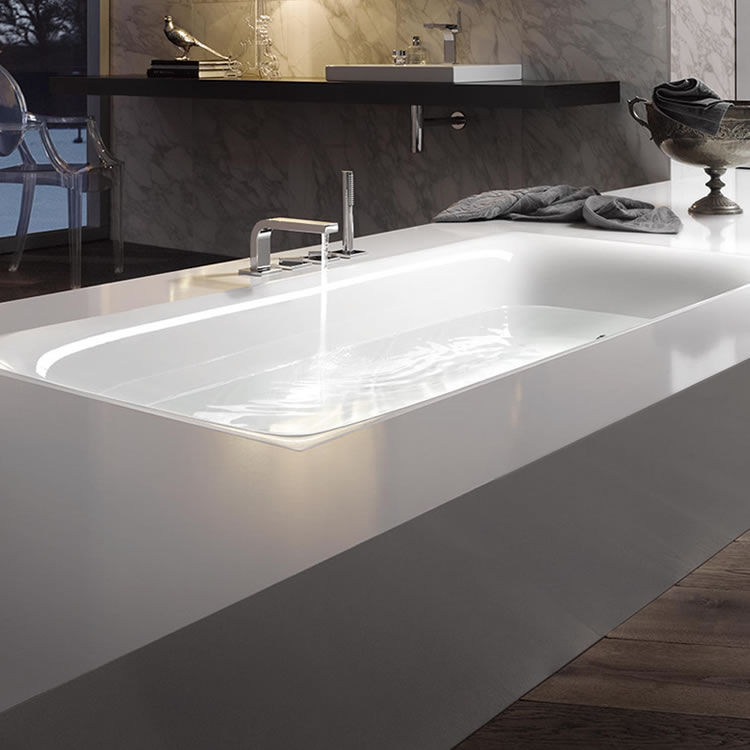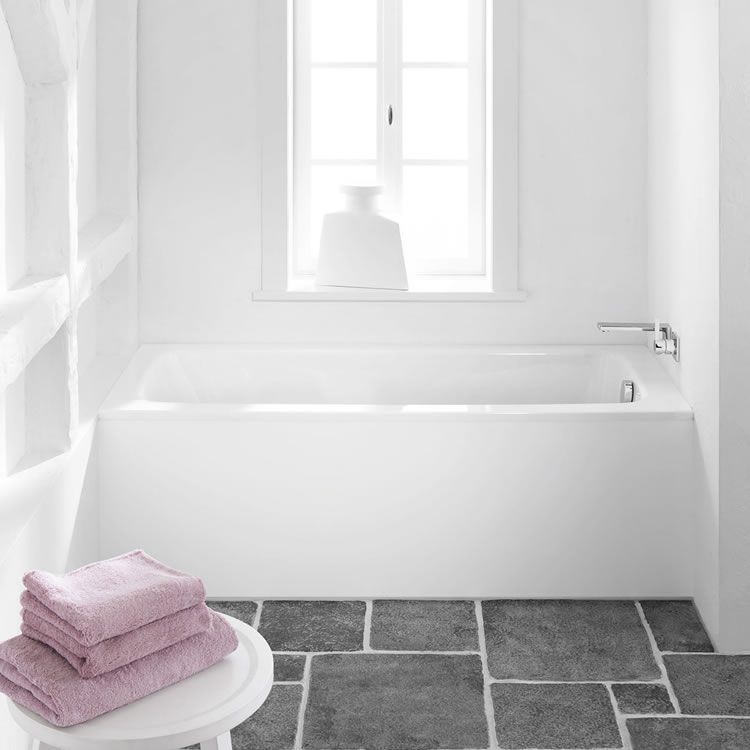Steel Baths vs Acrylic Baths

Choosing the perfect bath for your bathroom involves more than just selecting a design. To get the right bath for you, you also need to consider the material your bath is made from. This often leads to our customers asking a major question - “Should I get a steel bath or an acrylic bath?”
It is more of a rabbit-hole than you might think. Each material has benefits and drawbacks, covering everything from temperature retention, strength, ease of cleaning and so on. So, we have written this article to cover as many of the features of each type of bath as possible. We will cover:
- The pros and cons of acrylic baths
- The pros and cons of steel baths
After reading, you should have a better idea as to whether a steel bath or acrylic bath would best suit your bathroom.

Choosing an Acrylic Bath
First, a little bit about acrylic. This is an incredibly versatile plastic that is used in all sorts of products. It is shatter resistant, relatively cheap to produce and can be dyed to almost any colour: all factors that make it very well suited to baths.
However, acrylic does have a bit of a bad reputation with some people, because earlier baths made from the material were nowhere near as sturdy as newer models.
If you opinion has been jaded by a bad experience with acrylic in the past, give them a second chance!
What Are The Benefits of an Acrylic Bath?

Here are some of the main reasons people like acrylic baths:
- Cheaper - They are cheaper to buy because they are easier (and therefore cheaper) to produce. Acrylic baths can be mass produced much more effectively than steel ones.
- Durability - They are durable and especially suited to bathrooms that will see a lot of use from users who may not be especially careful, such as small children.
- Strengthened Options - Newer baths are reinforced, come with a wooden baseboard to strengthen them and prevent warping. This means the received wisdom that steel is stronger than acrylic may no longer be the case. They can be reinforced more too. Some acrylic baths have layers of resin that make them comparable in strength to steel.
- Flexibility in Design - The material is flexible, meaning it lends itself better to moulding. More designs can be achieved and when you are choosing a bath, this means you are more likely to find the perfect design.
- Variety - They come in a wide range of colours and designs, plus because of sophisticated modern manufacturing methods, they can look just as refined as non-plastic tubs.
- Warmer - They are warmer to the touch, meaning no cold steel against your skin when you get in. This may not be an issue for all bathers, but it can be quite unpleasant touching a cold bath in winter, even if the water is hot.
- Easy Cleaning - They are non-porous, meaning that cleaning is easy.
What are the Drawbacks of an Acrylic Bath?
It's not all good, though. Here are some reasons people dislike acrylic baths:
- Damage Risk -They are prone to damage. Any impact that would not damage a steel bath may crack or even split acrylic.
- Flexing in installation - They will always flex slightly, even if correctly installed, because of the nature of the material. As we touched on previously, this is less of a concern with newer models thanks to developments in the manufacturing process, but some people are put off nonetheless.
- Risk of Cracks - The fact that they flex leads to an increased risk of cracks and damage that just is not present in a steel bath. It should be noted that the likelihood of damage increases with weight (you and the water) plus an acrylic bath will not just break for no reason.
- Discolouration - The material can become discoloured over the years because of exposure to UV light, as well as to some of the chemicals found in cleaning products.
- Lack of Environmentally Friendliness - The material is made with processes requiring the use of fossil fuels and acrylic baths are not 100% recyclable. This means that, from an environmental perspective, they are not ideal.
What About Steel?

Steel is a hard, strong alloy metal, made from iron and other materials which vary depending on the type of steel. It is used in buildings, ships, cars, machinery and many other things.
What Are The Benefits of a Steel Bath?
Steel baths are perennially popular and for good reason. Here are some of the main things people like:
- Look and Solidity - The material has a real presence and steel baths often look very solid and elegant. Strong lines can be achieved in their design and they can complement modern or traditional design aesthetics effectively.
- Impact Resistance - They are coated with enamel which can withstand large amounts of impact and even if damage occurs, the entire bath surface can be sanded down and re-enamelled. This means that chipping or cracking a steel bath is incredibly difficult (even if the shower head falls off, for example).
- Durability - They are more durable and will last you a long time. Even with the increased strength of modern acrylic baths, a steel bath will likely last longer.
- Can be painted - They can be painted, opening up a huge new range of design options. The paint will not discolour with age, either, in the way that acrylic’s colour will.
- Colour maintained longer - The colour will stay purer for longer when exposed to cleaning products, thanks to the coating.
- Suited for designer bathrooms - They lend themselves better to a designer bathroom and careful ownership than acrylic.
- Hygiene benefits - Germs cannot survive on the surface of the bath, meaning that steel baths are more hygienic than acrylic baths. This is boosted by the absence of scratches to hold the dirt.
- More environmentally friendly - They are more environmentally friendly, because of less intensive manufacturing processes. Steel baths can also be completely recycled.
- Water temperature retention - They retain water temperature well, although perhaps not as well as acrylic.
What Are The Drawbacks of a Steel Bath?
There are many legitimate reasons why people are put off steel baths, too. Here they are:
- Cold to touch - It’s a chilly material, which can be quite shocking when you get in during winter months. This is true even when getting into warm water, as it takes a while for the water to warm up the metal!
- Higher expense - They have a higher price point for various reasons. Some people find that a steel bath is just too expensive for their bathroom redesign budget.
- May need earthing - Depending on your home, a steel bath may need to be earthed to prevent the risk from electricity in fault conditions.
- Heavier - The same material properties that make steel baths sturdier also make them heavier: trying to manoeuvre your steel bath up a staircase for installation in an upstairs bathroom is hard work.
- May require floorboard reinforcement - Your floorboards may need to be reinforced if the bath is particularly heavy.
What Else Should I Bear in Mind When Choosing A Bath?

What are your bathing habits? That is the main consideration when choosing a bath. If you spend a long time soaking in a bath, you may decide to spend a bit more money for something that feels that little bit more luxurious. If you have young kids in the house, you probably just want something that does the job and is easy to clean. If you are prone to feeling particularly cold or find yourself soaking for so long that you top up your bath with hot water a few times, you can add insulation around the tub to keep it hotter for longer.
Some people find themselves drawn more to one material or the other, but if you do not have a strong preference after reading this piece, just go for the one whose design you like most.
Does Acrylic or Steel Hold Temperature Better?
This is a question that crops up a lot, so we have included some information.
The answer to the question varies depending on where you look, but what seems most likely is that acrylic offers more insulative properties than steel, but because most of the water's heat is lost upward, the effect is smaller than you might expect.
There You Have It…
Hopefully, this article has answered all the questions you have about the benefits and drawbacks of steel and acrylic baths.
Each material has properties that people like and dislike and, for some people, these will be a deal-breaker. If you are not one of these people, you can decide based on design instead.
When choosing a bath, please feel free to ask our team any questions you may have. They are experts in all things bathrooms and will be happy to help you make the right choice!